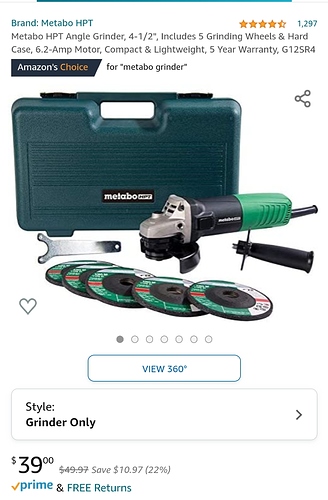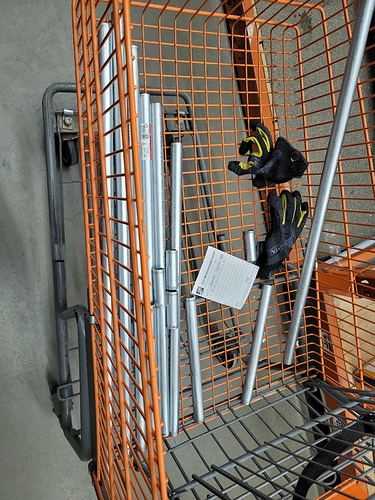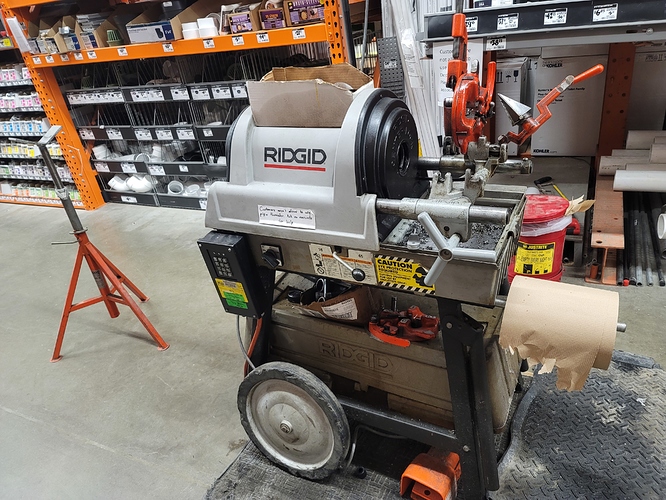I happen to own one of these. Would you guys know if this will cut the conduit? If not, what tool do you guys recommend?
It should, you may want to buy a few cutoff wheels which are generally thinner than grinding wheels.
And please, be good to yourself with eye/face protection, they’re kinda hard to replace.
Thanks Paul!
I am actually at home depot now and my local HD is awesome! See what they did for me for free. And super precise!
They used this machine for it.
Good stuff! Glad it worked out ![]() I don’t know if it comes from relocating or if their policies have changed but I’ve found the folks at my new to me local HD far more helpful than was the case in my previous local store.
I don’t know if it comes from relocating or if their policies have changed but I’ve found the folks at my new to me local HD far more helpful than was the case in my previous local store.
I cut my emt with a regular pipe cutter, something like this
https://www.amazon.ca/dp/B087FCM4GY/ref=cm_sw_r_cp_apa_fabt1_EWhSFbV3FS9AH
It will leave super rough spots where the vise clamps on the conduit
I tried at first with a tubing cutter but quickly switched over to an angle grinder with a thin cutoff wheel like @B-26 suggests above. Completed all the cuts reasonably square in very short order.
My local homedepo was awesome enough to do it for me. I was on verge of purchasing the blade myself for the grinder. I’m glad i asked the store first. I highly recommend to ask the point of purchase about it. It’ll be worth time.
I see in instructions that we need to drill holes in the conduit. I’m just wondering how did you guys do that? I have tools for drilling into wood, but i think emt will need special bit.
Mark the hole locations as specified in the instructions. Center punch hole locations to prevent bit from wandering. Use a v-block or other method (such as setting in table saw miter slot) to support conduit in a way that keeps it from turning. Pilot drill with a small bit, 1/16” or 1/8” ( or metric equivalent). Move up to final size in 2 or 3 steps.
Regular twist drills should be okay for a few holes. If you’re planning on drilling more metal, particularly thinner walls or sheet metal, invest in a step drill (or a set of them).
I’ll have to look up some terminology on google (like i don’t know how to “center punch”), I’ll do my homework.
Center punching is using a hard pointed tool to make a small dimple for the tip of the drill bit to start in. Spring-loaded punches are available, as are ones to hit with a hammer. In a pinch I’ve used a drywall screw and hammer but they dull quickly on the steel.
This also works.
https://harborfreight.com/plumbing/plumbing-tools/pipe-threaders-cutters-benders/tubing-cutter-40913.html
Links to examples of tools I mentioned above:
- Center punch
- Automatic (spring-loaded) center punch
- V-block (or could DIY out of block of wood with a couple of 45* cuts)
- Step Drill (set of 3)
Wow! You trusted the guys at Home Depot for measurements? At my HD, I have literally had to explain what all the little marks between the numbers are! Hopefully, you had a better experience. Personally, I use a metal blade on my chopsaw, then a reamer on the hand-held drill (https://www.amazon.com/gp/product/B00OA02UBS/ref=ppx_yo_dt_b_search_asin_title?ie=UTF8&psc=1). Using a mini-grinder is also good, just be wary of kickbacks and suck-unders (?) Be sure not to leave wicked bits of metal hanging off the ends!
Lol, i must be lucky then. I stood there with him watching him do it. He took extra time to ensure that all the little lines that i had marked on the conduits lined up correctly. I told him that it was an engineering/scientific experiment in layman’s terms, and he took it seriously.
I didn’t know that my miter saw can cut through EMT! I have a hitachi 10 inch miter saw. When you say chop saw did you mean miter saw?
Yes, miter saw it is. If you use it for metal a lot, you might melt your throat plate. You can get a cheapo abrasive blade for under $10, or a nice metal one for a bunch more.


